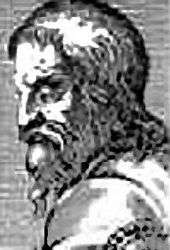Binot Paulmier de Gonneville

Binot Paulmier, sieur de Gonneville, French navigator of the early 16th century, was widely believed in 17th and 18th century France to have been the true discoverer of the Terra Australis (which does not refer to Australia). This claim is not now accepted by historians.
In 1503 de Gonneville, challenging the Portuguese policy of mare clausum, sailed from Honfleur in Normandy with his crew and the help of two Portuguese pilots, heading for the East Indies. When he reached the Cape of Good Hope his ship L'Espoir (The Hope) was diverted to an unknown land by a storm. In 1505 he returned claiming to have discovered the "great Austral land," which he also called the "Indies Meridionale." According to de Gonneville, he had stayed six months in this idyllic place, where the inhabitants didn't have to work because of the riches. De Gonneville stated that this land was six weeks' sail east of the Cape of Good Hope.
De Gonneville's tale was forgotten until 1663, when Jean Paulmier de Courtonne, Canon of the Church of Saint-Pierre at Lisieux, a relative of de Gonneville's, published a book called Memoirs Concerning the Establishment of a Christian Mission in the Austral Land, in which he claimed to be the great-grandson of an "Indian" brought back to France by de Gonneville in 1505.
De Courtonne's claims struck a chord at a time when French patriotism was offended at the success of the Dutch and the English in making new discoveries in the South Pacific. De Gonneville's long forgotten tales were revived as the basis of a French claim over these new lands. This belief grew in the 18th century and led to French expeditions such as those of Bouvet, Bougainville, and Kerguelen.
It is now known that the lands that Gonneville discovered were not the legendary Terra Australis, or as has also been proposed, Madagascar, but are part of the coast of Brazil on and around Santa Catarina Island, and that the inhabitants he encountered, one of whom, Iça-Mirim (whose name the French rendered as Essomericq) was taken back to France and married Gonneville's daughter, were Carijó Indians.[1]
References
- ↑ Leyla Perrone Moisés, Vinte Luas: Viagem de Paulmier de Gonneville ao Brasil, 1503-1505, Companhia das Letras, São Paulo, 1992; Leyla Perrone-Moisés, Le voyage de Gonneville (1503-1505): et la découverte de la Normandie par les Indiens du Brésil, traduits par Ariane Witkowski, Paris, Editions Chandeigne, 1995.